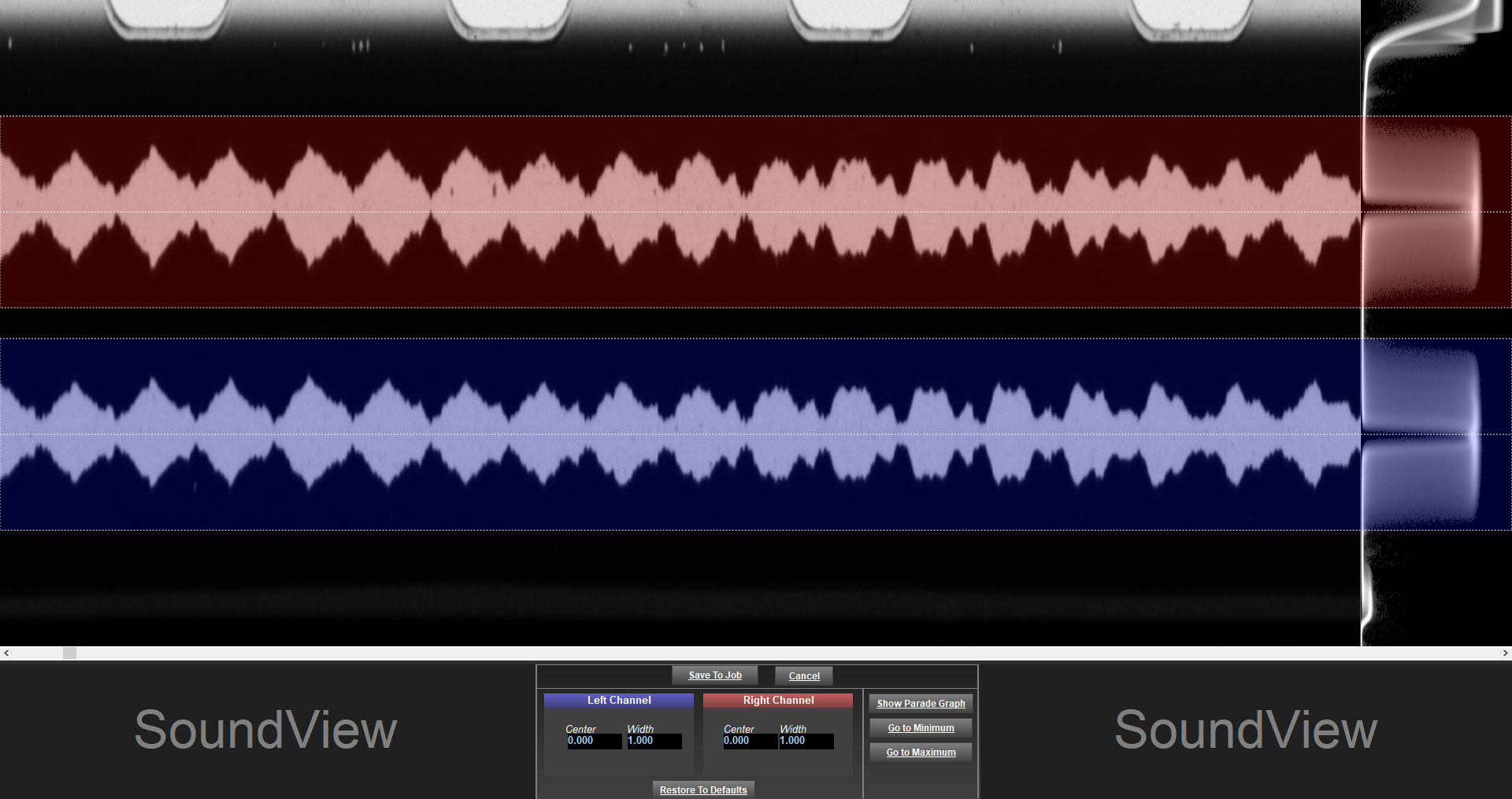
Ultimate Affordability
Fast. Easy. Flawless. Affordable.
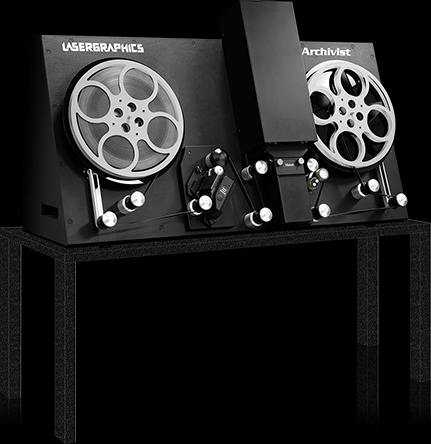
Optimized to meet the distinctive needs of film archives without exceeding budgetary requirements.
- Up to 5K resolution
- Scanning speeds up to 30 fps
- High density scanning due to its 2-flash High Dynamic Range
- Warped film gate option allows scanning of damaged and warped film
- Gentle sprocketless film transport ideal for older films
- Image and optical/magnetic sound scanned in a single pass
- Output to many file formats (ProRes, DPX, TIFF, JPEG 2000 and FFV1, etc.)
Maximum Stability
Soundtrack Reading
- Simultaneous image scanning and soundtrack reading
- Synchronized audio and image output to ProRes and H.264 (no post-processing or third-party tools required)
- Variable scan speed for fragile film (no requirement to read in real-time)
- Noise reduction processing reduces noise dramatically compared to conventional slit-based readers
- Optical soundtrack extraction from scanned image
- Automatic continuous alignment of track to edge of film (no need for constant manual adjustment e.g. thumbscrews)
- SoundView visual soundtrack position control
-
- Variable-density optical soundtrack reading from negative film
- Conventional optical soundtrack readers are designed to read the soundtrack from print and NOT negative film, which results in distorted audio, pops, clicks, and static.
- Lasergraphics optical soundtrack reading technology is able to read the soundtrack from both print AND negative film, which results in undistorted audio and no pops, clicks, or static.
Click and drag back-and-forth on ⊲⊳ to compare images. 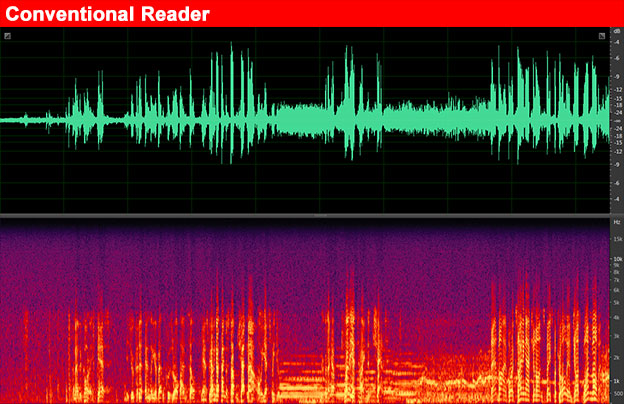

-
- Magnetic reader: (no need for separate magnetic soundtrack reading system)
- 16mm commag
- 16mm sepmag 2-channel
- Super 8mm commag 2-channel
- Standard 8mm commag
- 17.5mm sepmag
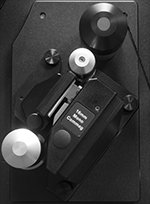
Damaged and Warped Film Scanning
Optical Pin Registration (no edge guiding)
For the best stability of shrunk and damaged film.
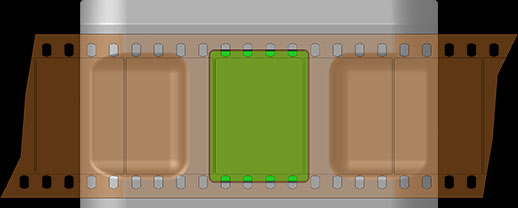
Lasergraphics' proprietary 2D optical pin registration system locates up to 8 perforations and is able to register the frame even if only one of the perforations is usable. The frame is stabilized in the X, Y, and rotation axes. Therefore, shrunken film can be effectively stabilized with no mechanical or software adjustments. All optical pin registration is performed during the scanning process, eliminating the need for any post-processing.
Lasergraphics scanners are highly immune to perforation damage and splices while maintaining registration. Lasergraphics' 2D optical pin registration detects the location of all of the holes and then determines which ones are damaged. The damaged ones are ignored while the undamaged ones are used to align the image.
- Optical pin registration is superior to:
- Mechanical pin registration, which engages the film in only two perforations and is only effective on undamaged and unshrunken film.
- Edge guiding, which weaves laterally because it entirely ignores the holes and is highly intolerant of splices.
Sprocketless Film Transport
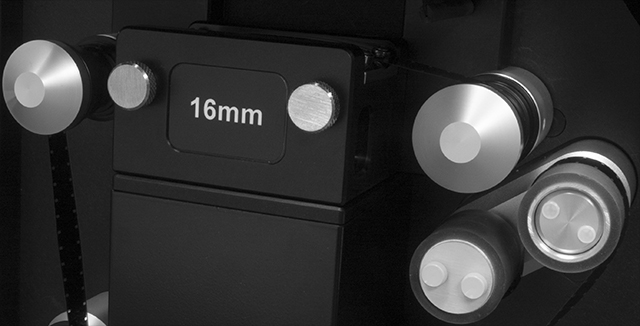
Continuous motion sprocketless capstan servo drive for constant film tension and safe film handling.
Software-controlled adjustable film tension.
Stable Diffuse Light Source
Stable low-heat LED light source protects film from heat damage and diffuse uniform illumination from the integrating cube reduces the appearance of scratches in the film base and emulsion (that do not damage the dye layers) without softening, blurring, or altering the image.
 | On-axis light passes through undamaged film and reaches lens |
 | On-axis light passes through scratch which deflects it away from the lens |
 | Off-axis light from diffuse source passes through scratch but nevertheless reaches lens |
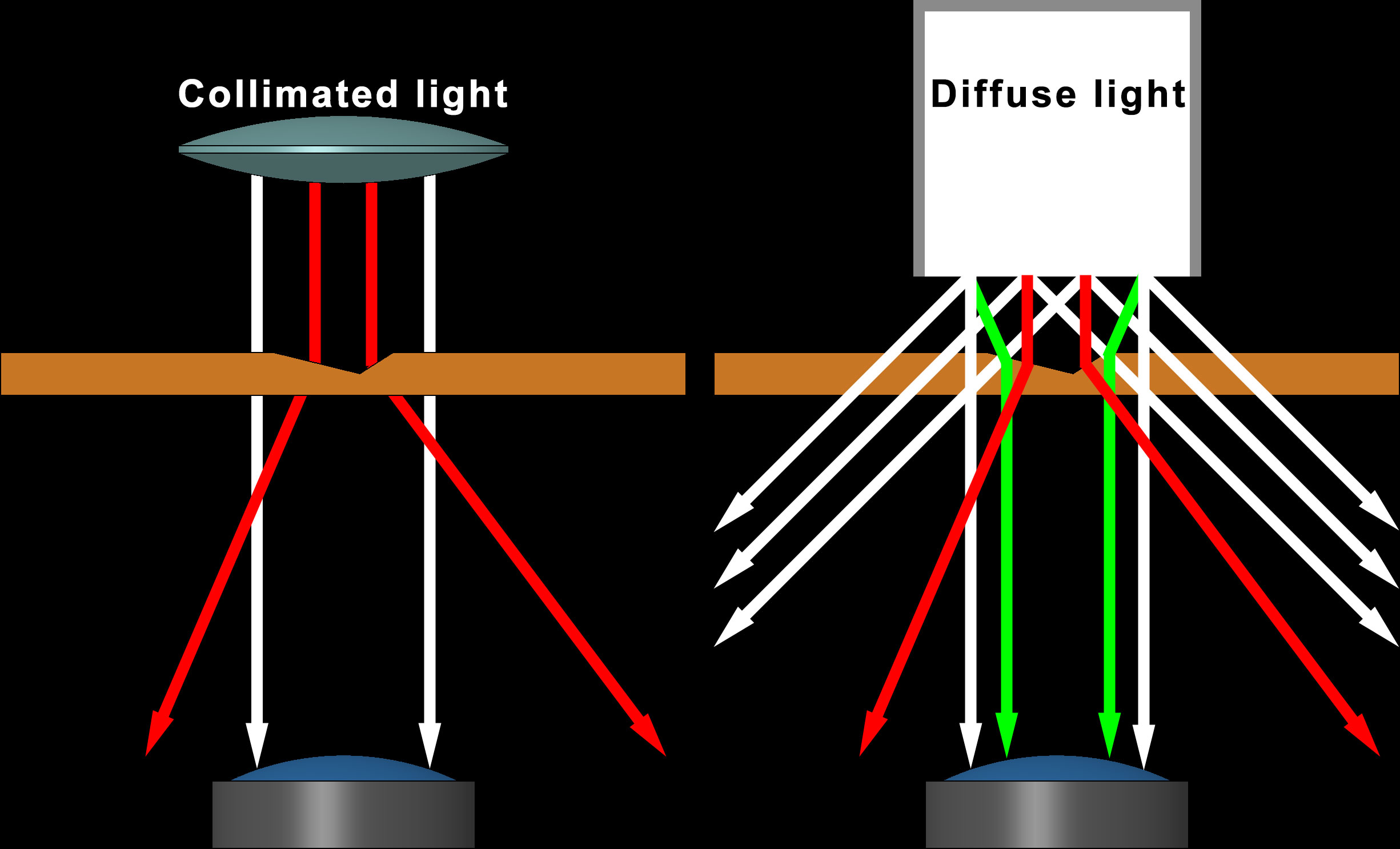
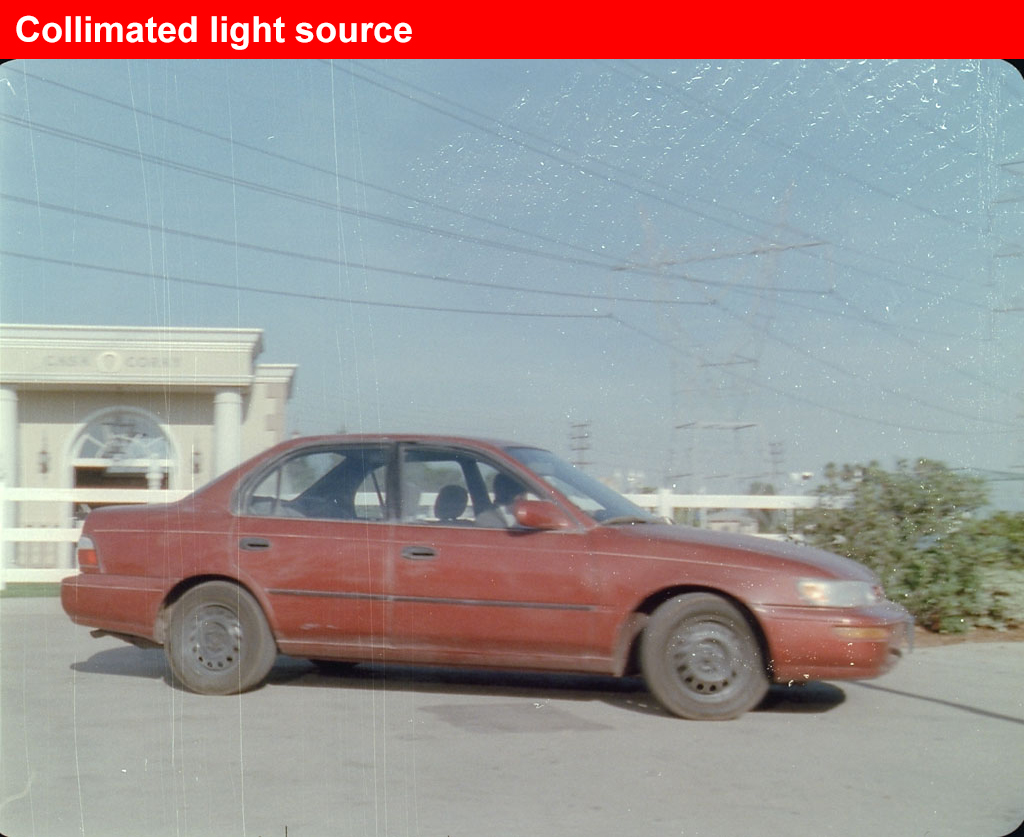
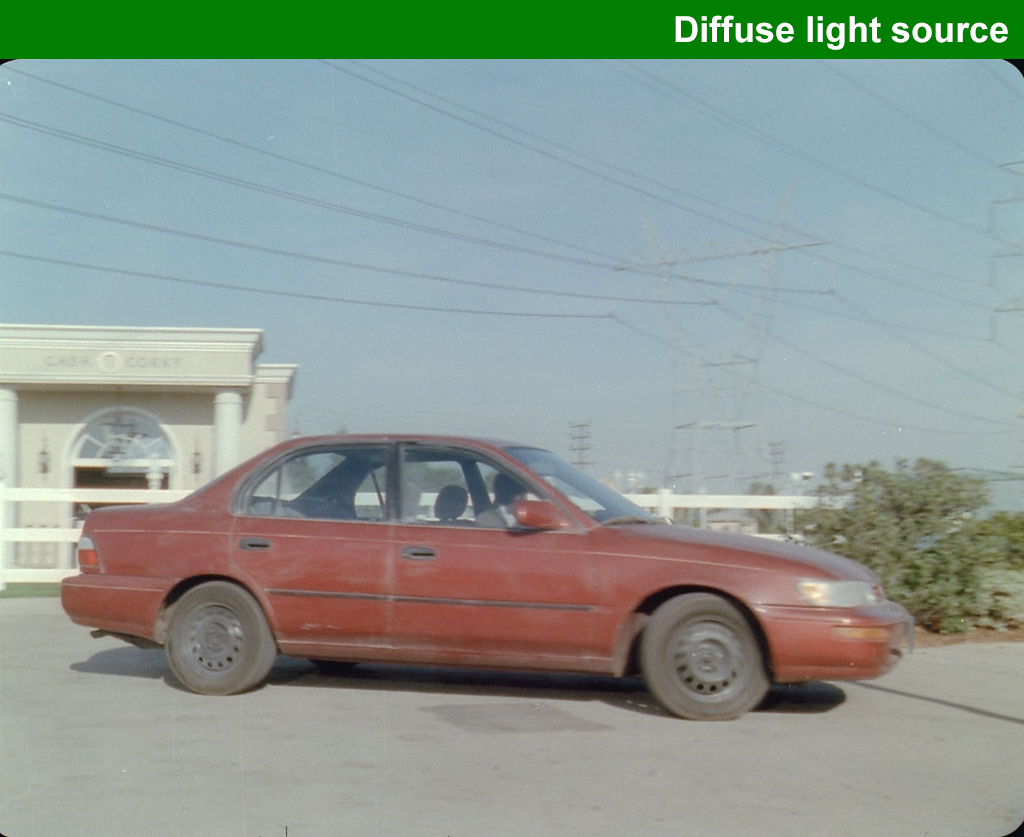
Warped Film Scanning
Warped film can't naturally lay flat in the gate causing the center to appear shrunk compared to the edges and the resulting output will have a ripple or “potato chip” effect.


JPEG 2000 and FFV1
Lossless compression without post-processing
Archiving scanned images losslessly has always been the gold standard but results in very large files. Lossless compression can reduce the storage requirement by up to 50%. Traditionally, this is a two-step process.

Our improved encoding capability can scan and compress in a single step — dramatically reducing bandwidth requirements and overall processing time without impacting scanning speed in most cases (e.g. 4K 16-bit to FFV1 will scan and compress up to 20fps).

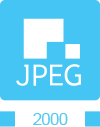
- Lossless or lossy
- JP2 - one file per frame
- MXF wrapper - entire scan in a single file (including audio)
- ISO standard
FFV1
- Lossless
- MKV wrapper - entire scan in a single file (including audio)
- Open source and patent free
- Supported by popular post-processing systems (e.g. DaVinci Resolve)
- Preferred by foremost film archives (e.g. Library of Congress, BFI National Archive, Cinémathèque Française)
High Dynamic Range Scanning
Single-pass color and B&W 2-flash HDR scanning for the best capture of print film shadow detail
Often, part or all of the original negative is missing when it comes time for an older film to be scanned. This requires that print film be scanned for the missing portions. Whereas the highest density on negative film is about 2.0, the highest density on print film is 4.0 or more. Thus, scanning print film requires up to 1,000 times more dynamic range than negative film.
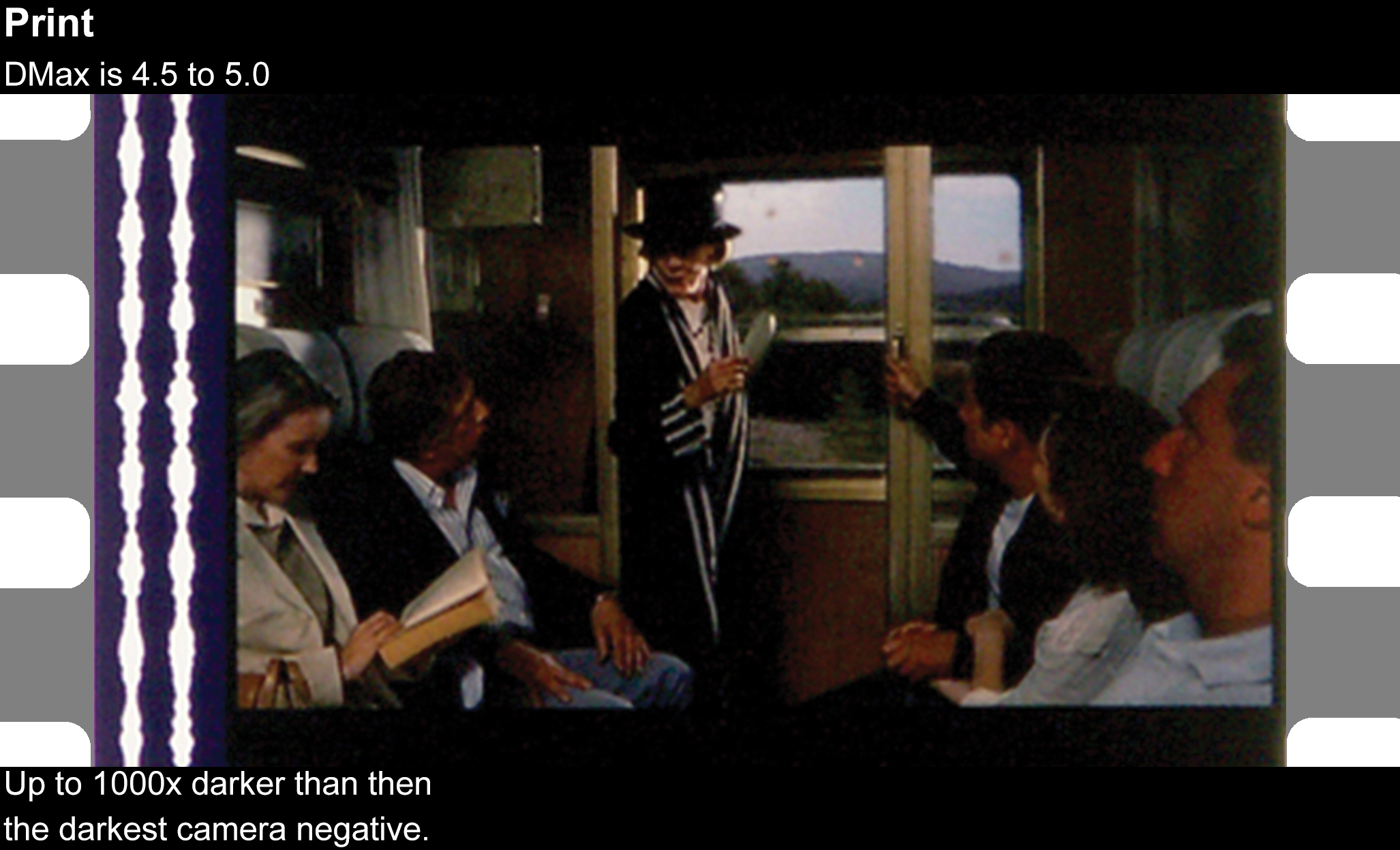
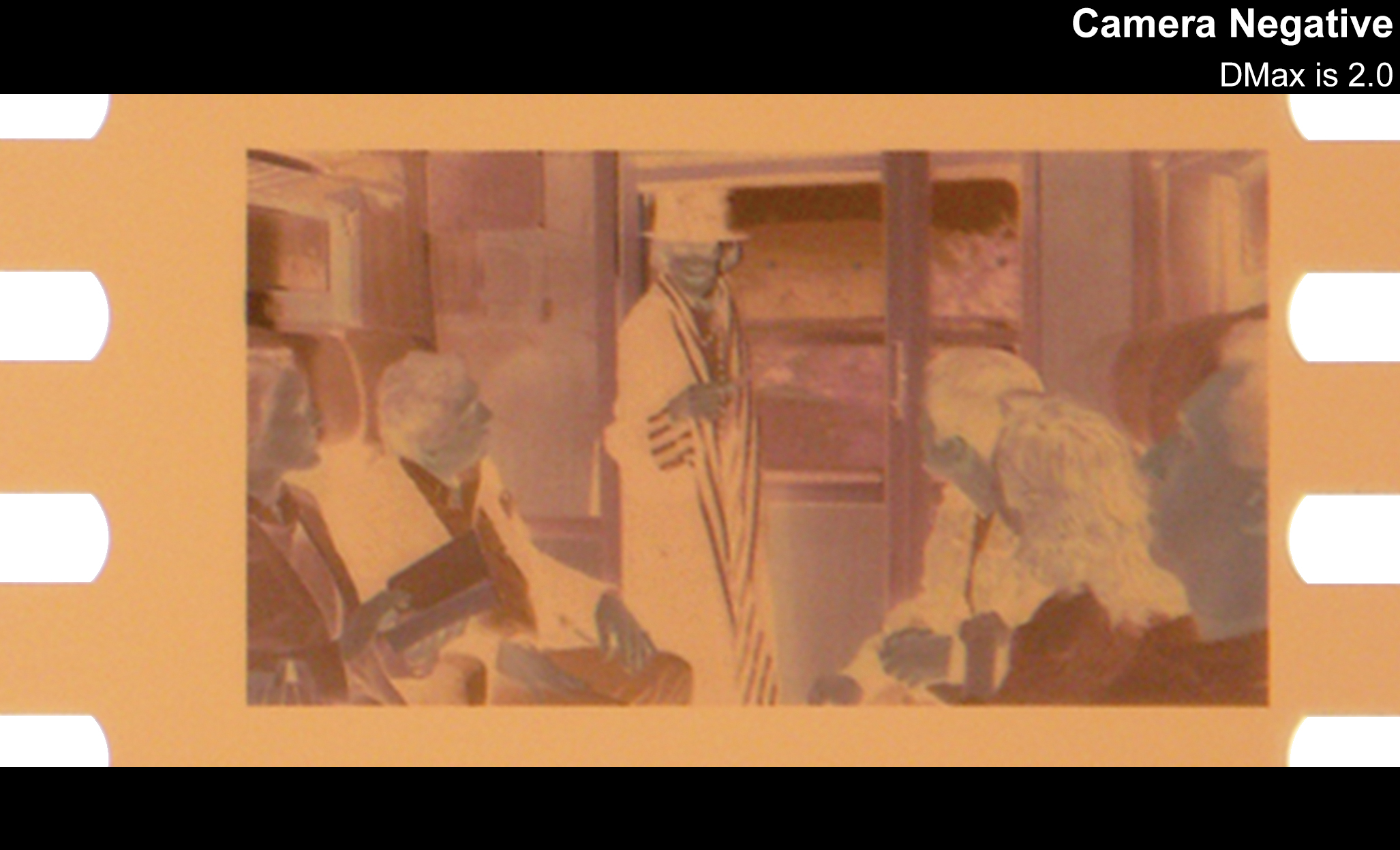
Conventional film scanners are optimized to scan negative and not print film, resulting in shadow detail loss or noise.
In contrast, the Archivist's 2-flash scanning capability can easily capture shadow details on print film at densities well beyond 4.0.
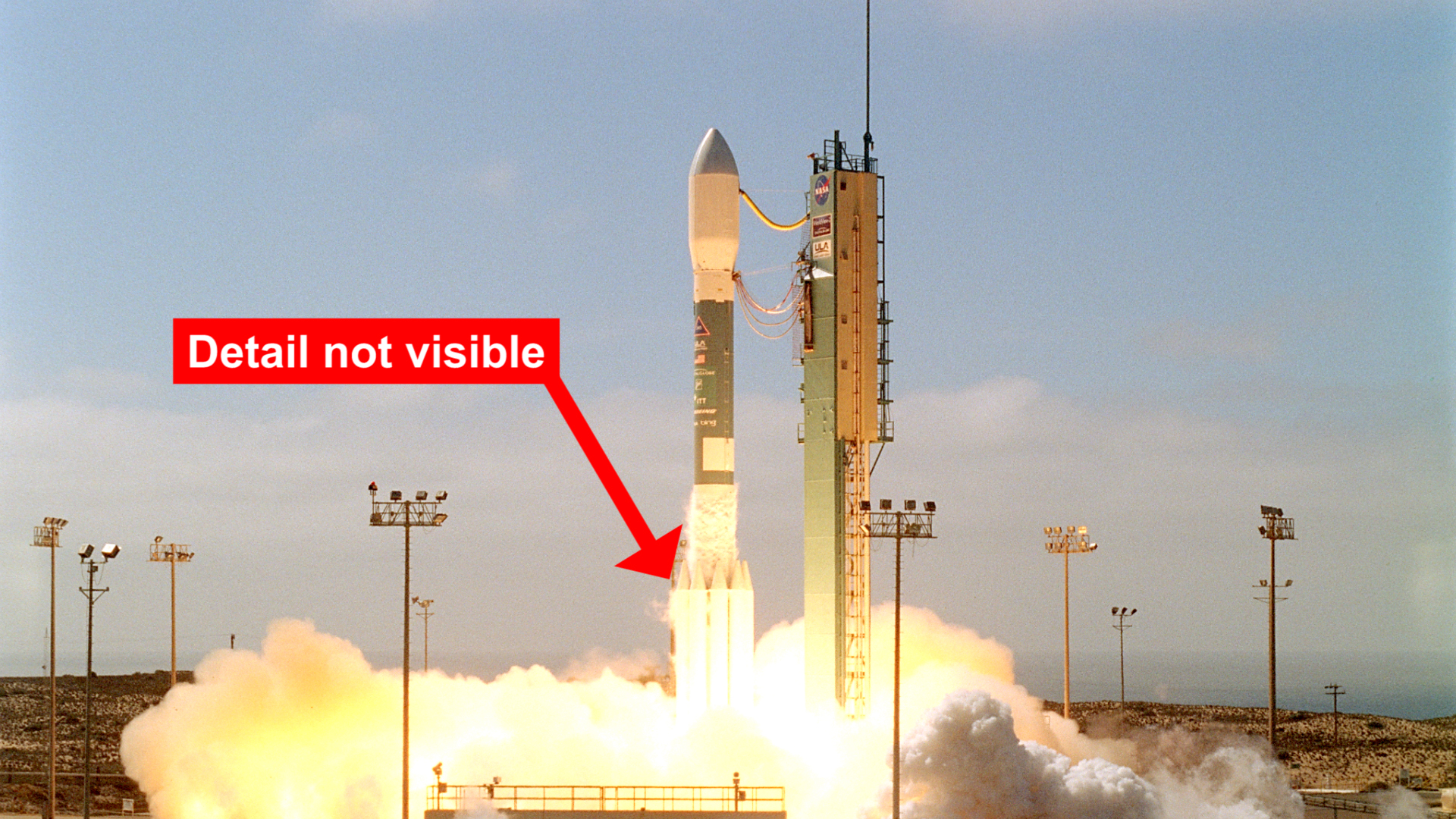
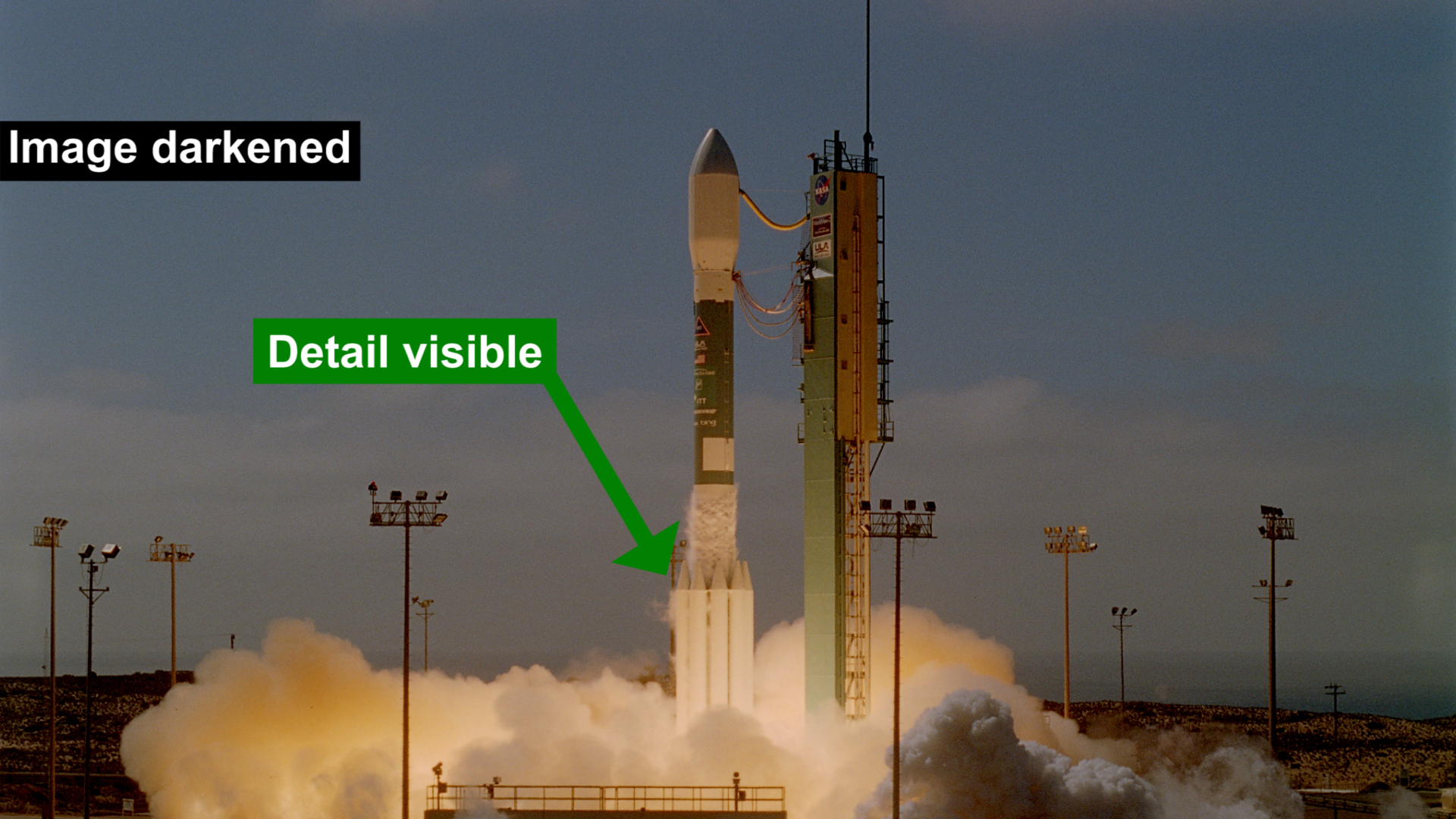
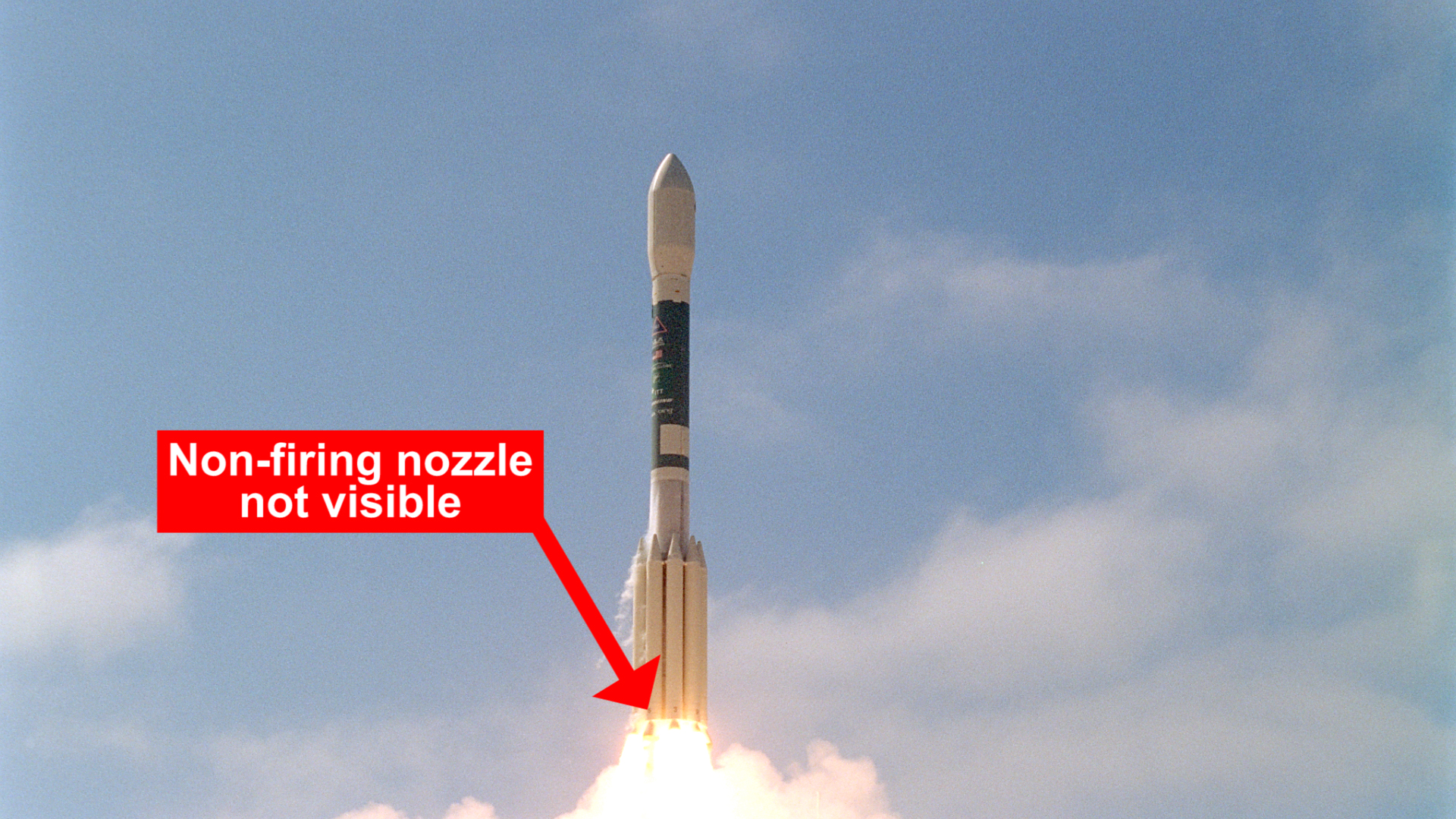
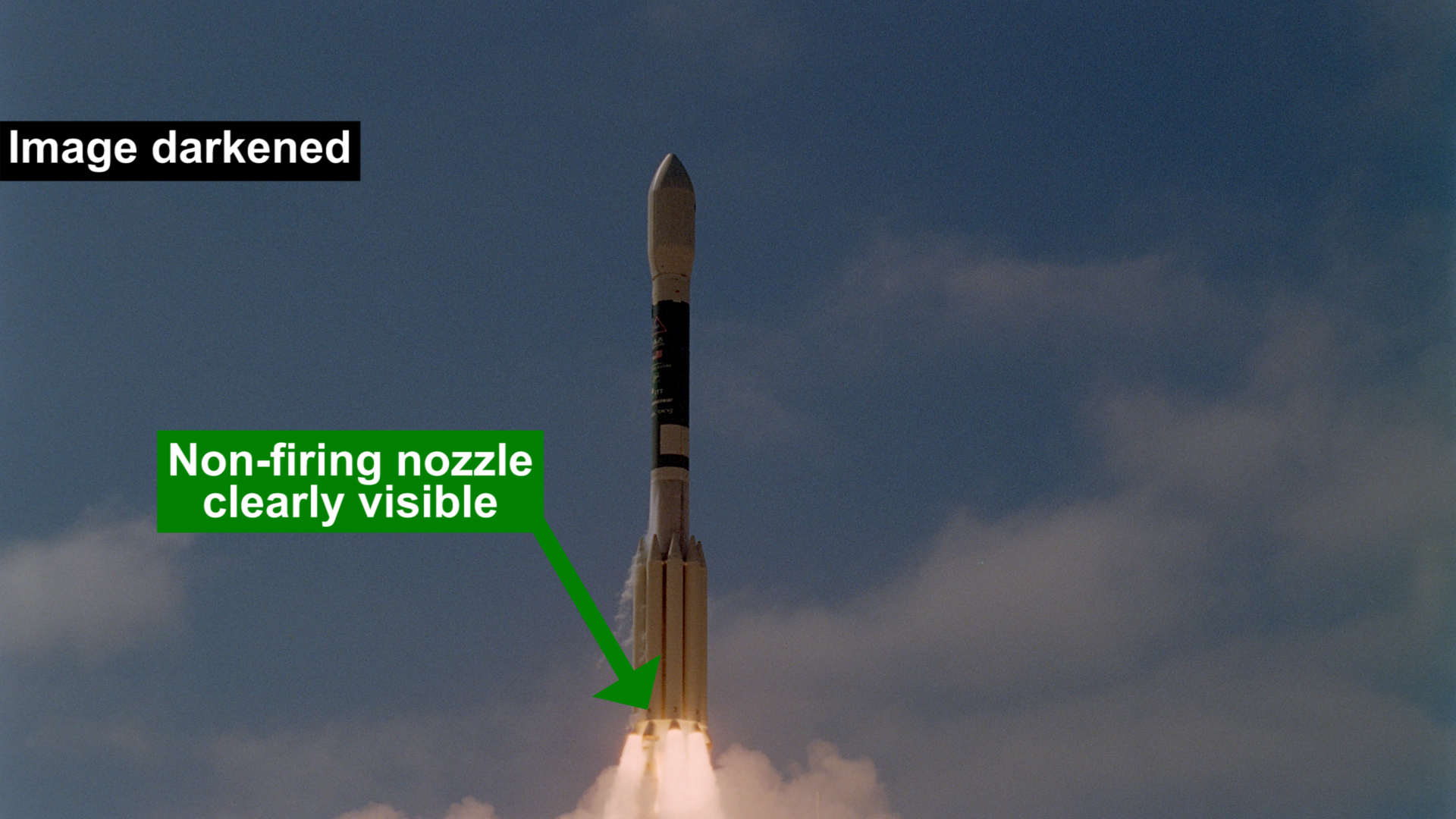
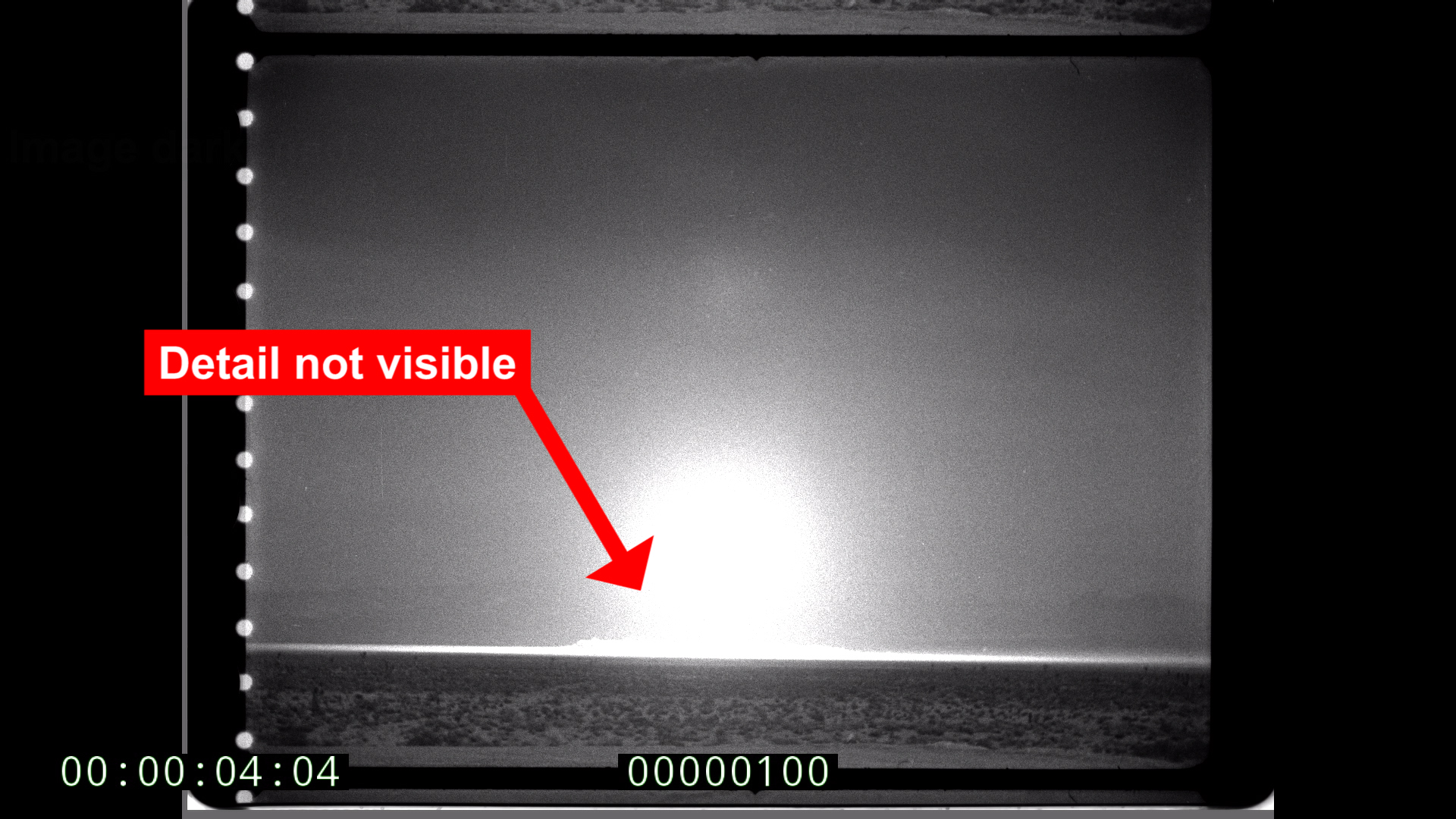
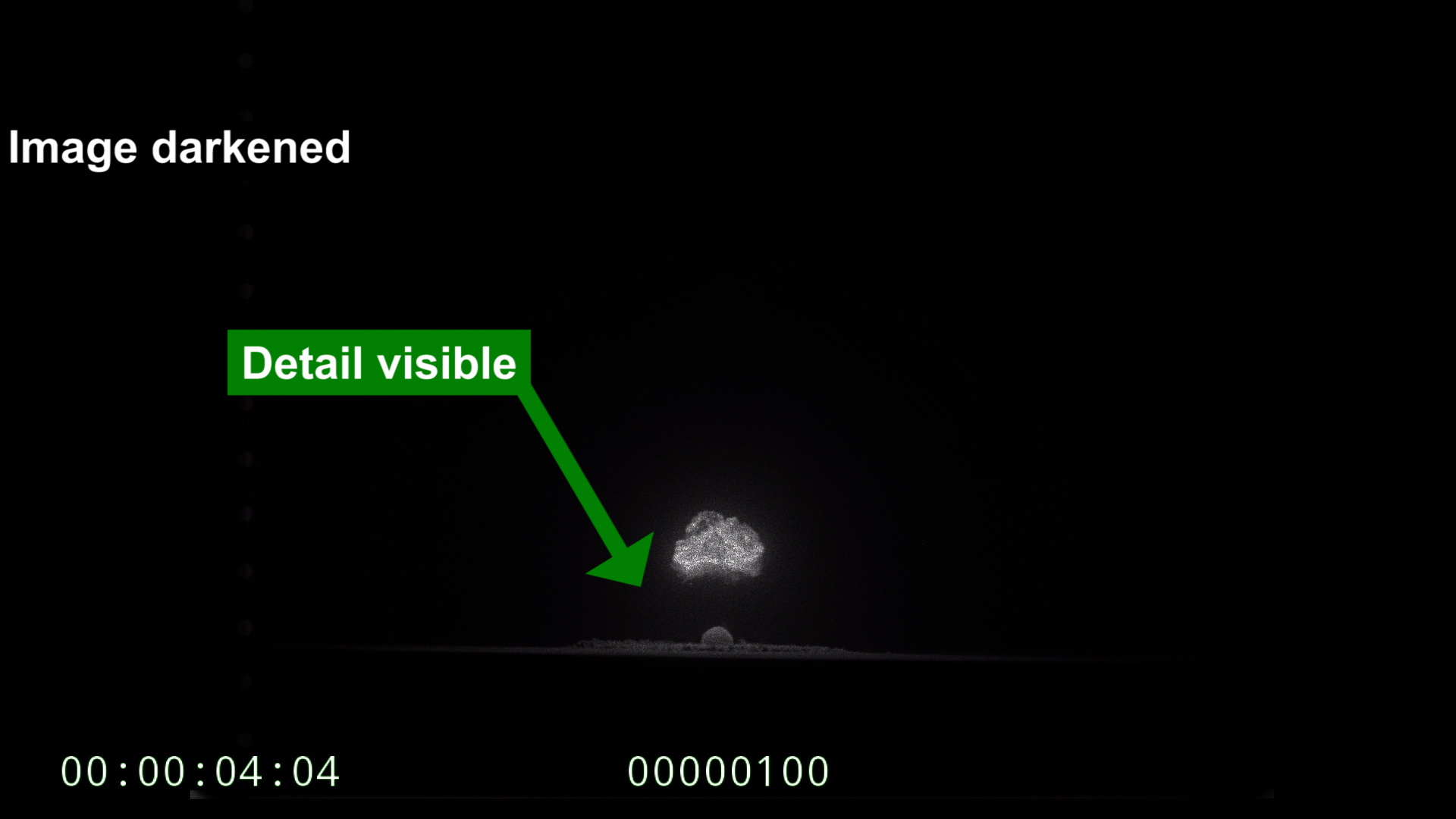
Below are scan comparisons between the ARRISCAN, the dft Scanity, and the Archivist from the same print film using 2-flash scanning. Images have been digitally brightened 1,000 times to reveal detail in the shadow (i.e. high density) regions. Notice the vertical artifacts, excessive noise, and loss of detail in the ARRISCAN and dft images.
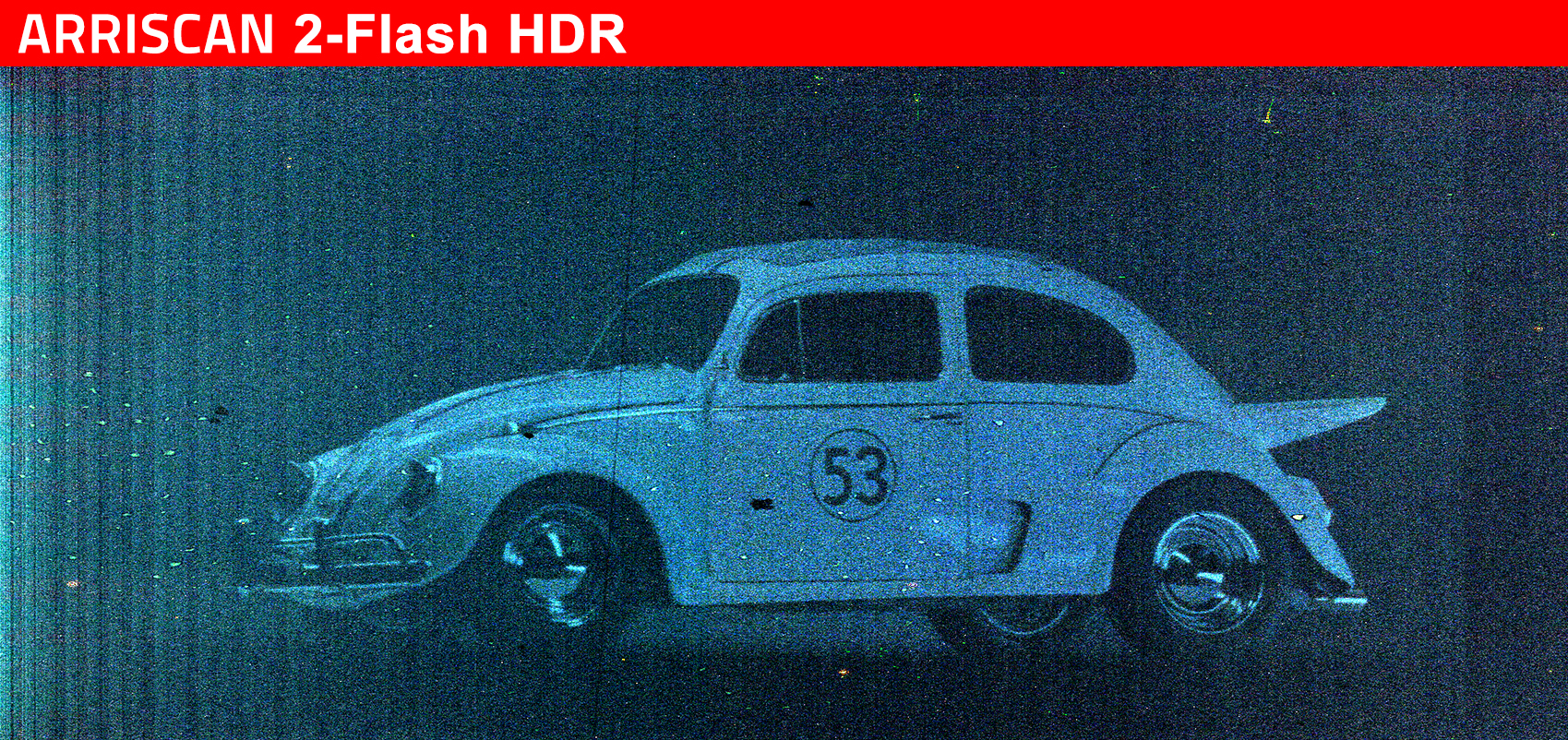
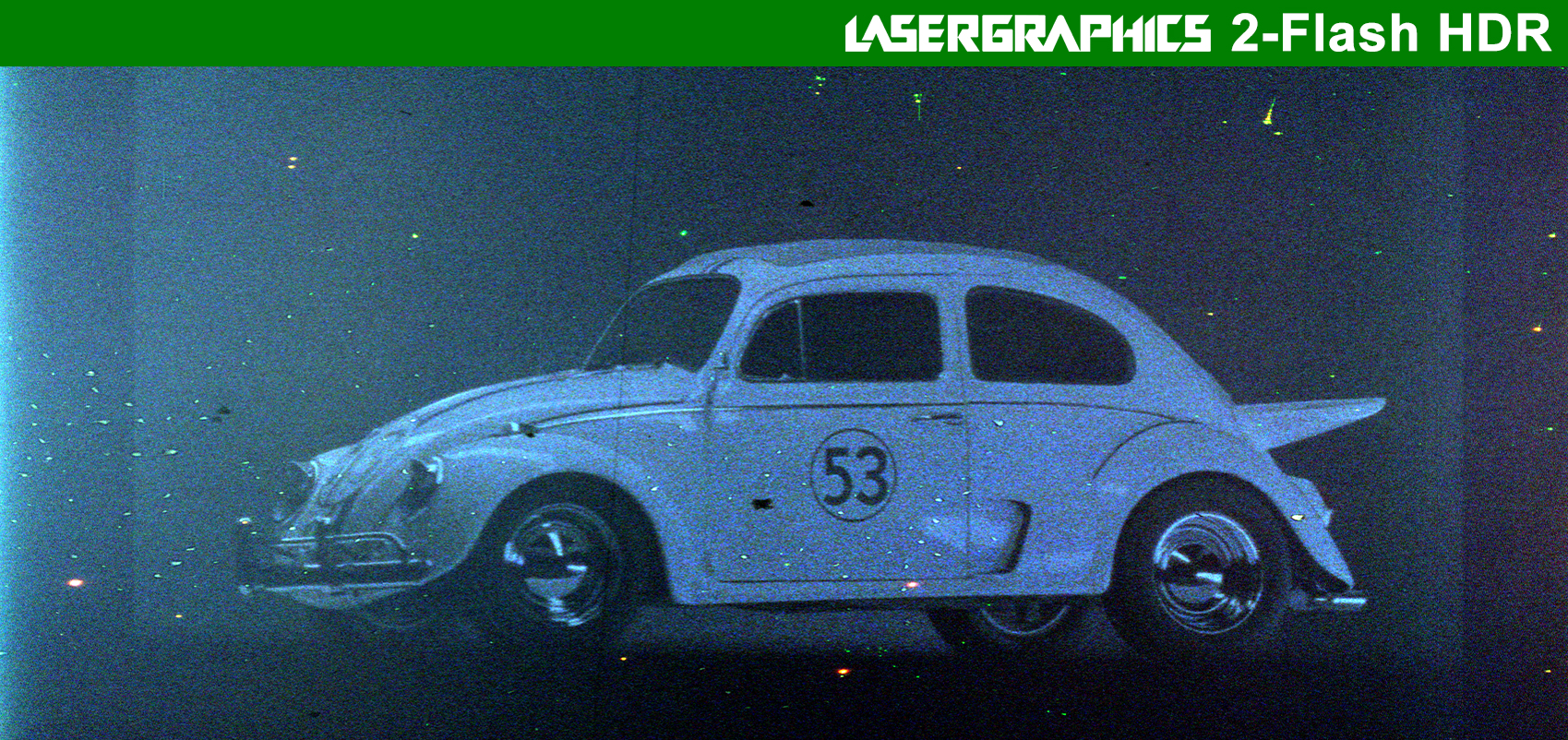
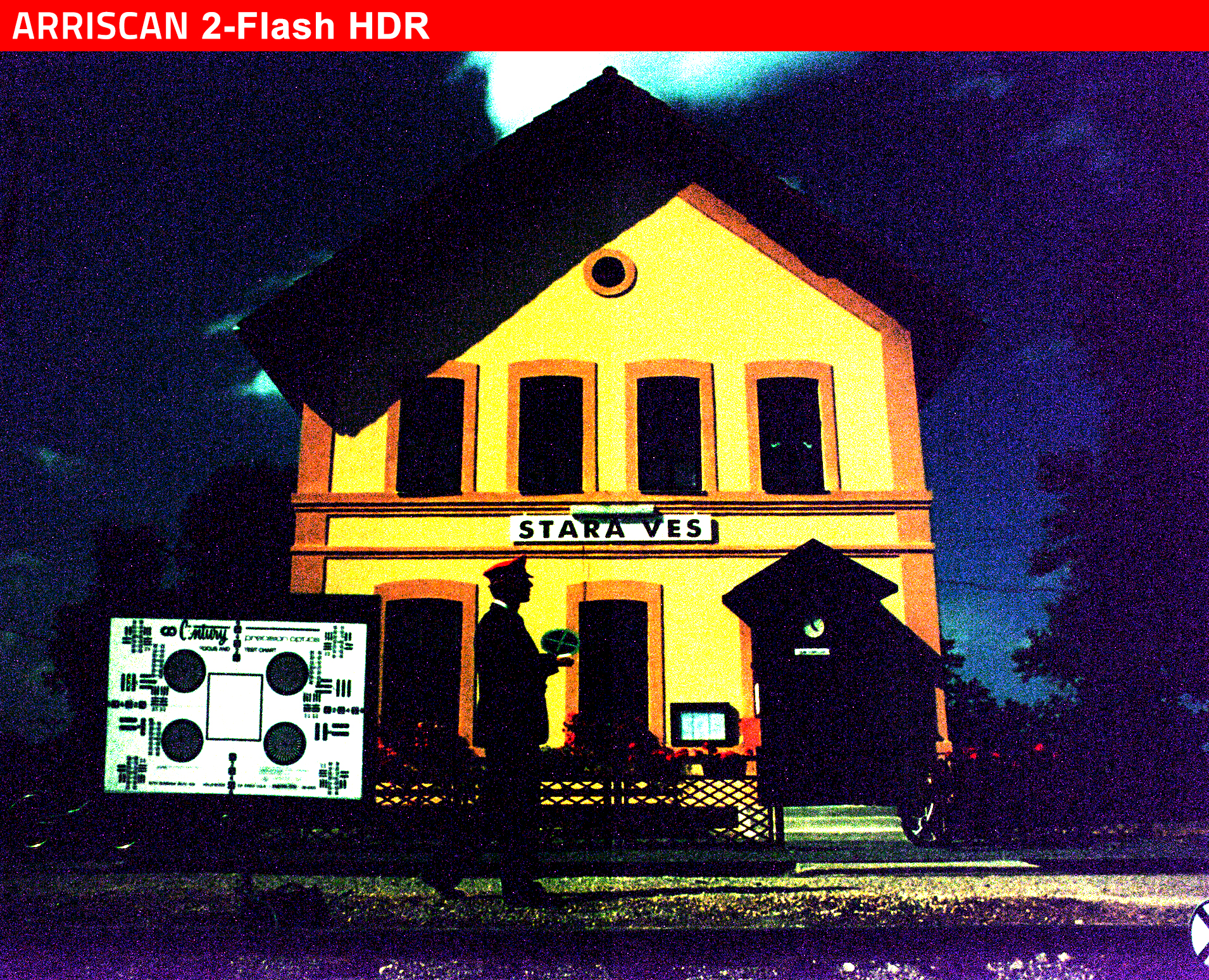
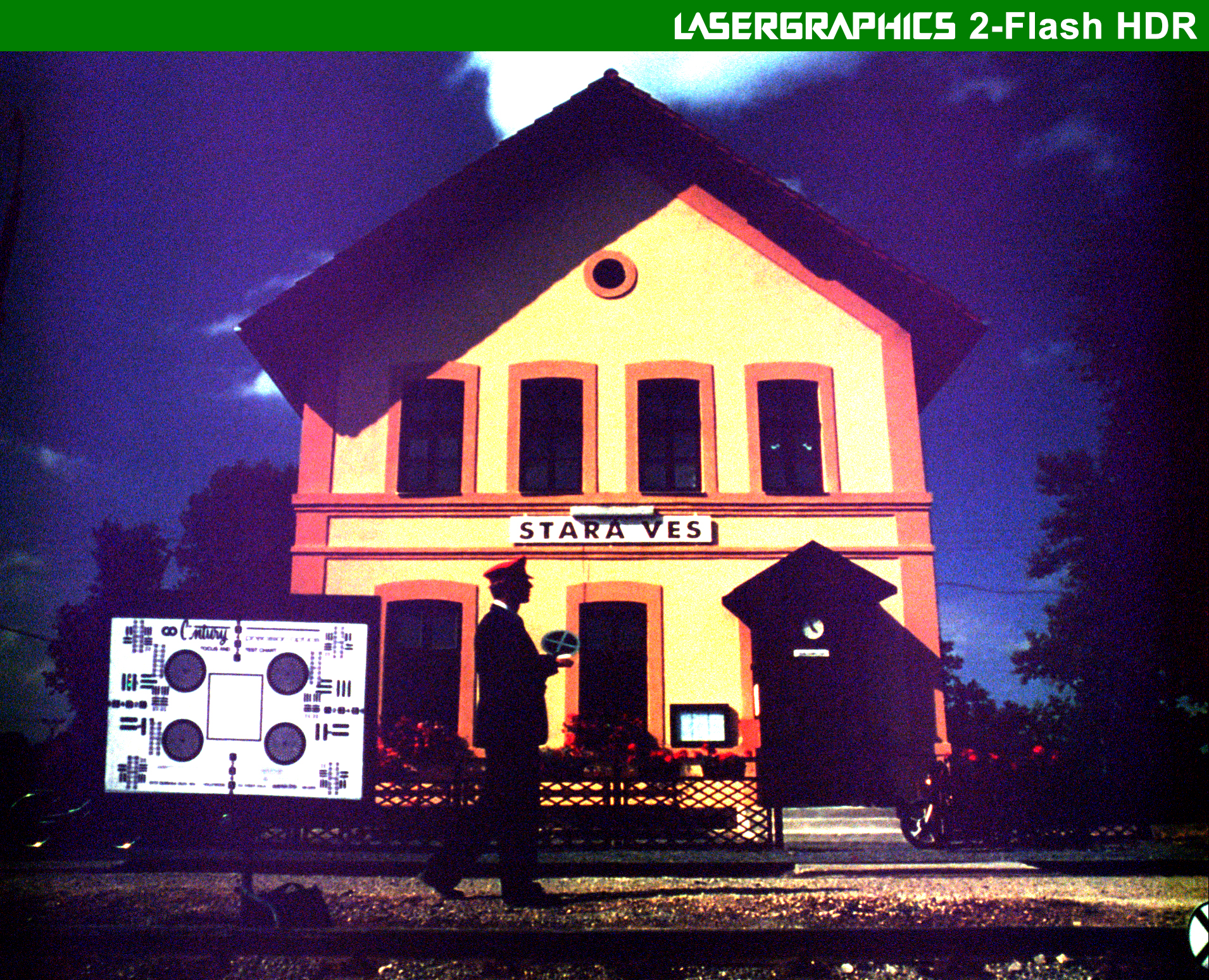
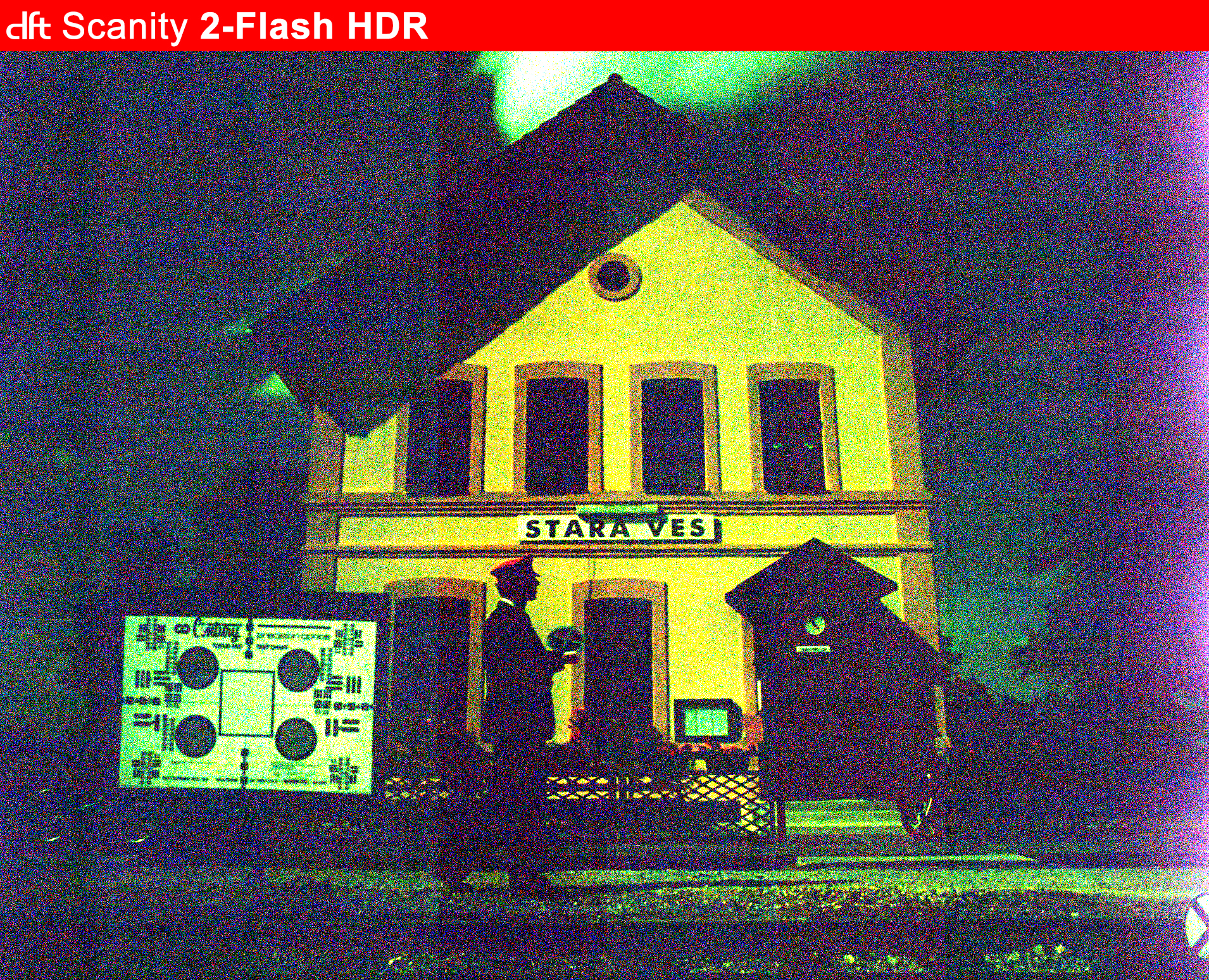

Dye Fade Correction and Intelligent Noise Reduction
Built-in color grading tools for easy dye fade correction, applied during scan, eliminates secondary post-processing step.
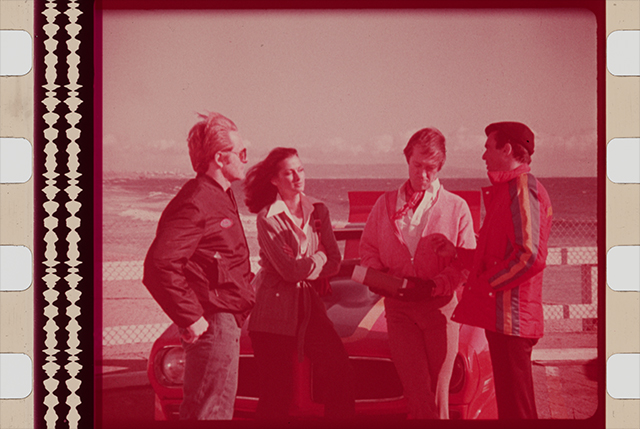
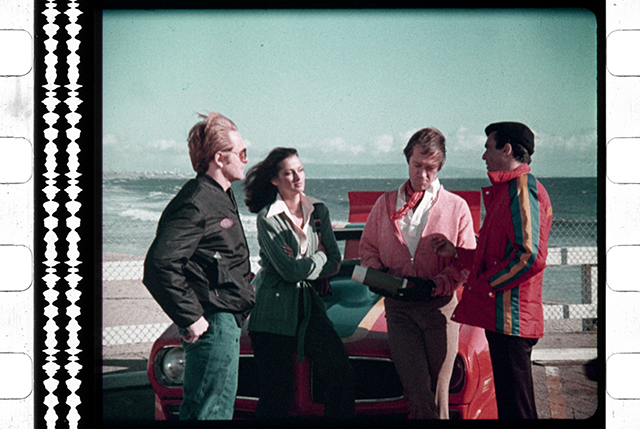
Intelligent Noise Reduction
Dramatically reduces noise in high density print and negative film.
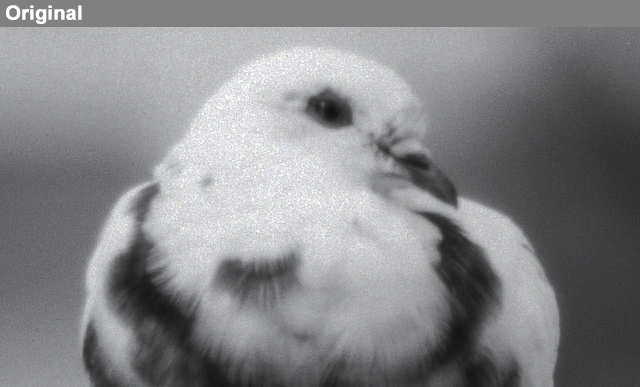
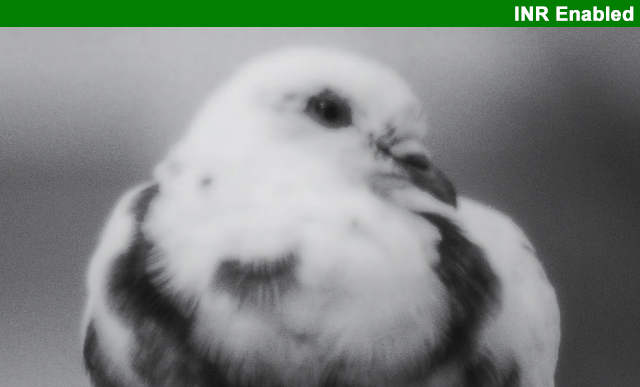
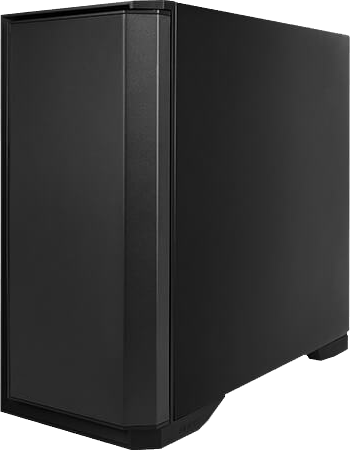
Complete Film Scanning System
- Host computer ready-to-use and pre-configured with Microsoft Windows and Lasergraphics Motion Picture Film Scanning System software featuring:
- Full transport and scanning control
- Aperture and shading correction
- Automatic or manual DMin calibration
- Self-calibrating intensity, focus, and film base
- Selectable scanning speed
- Adjustable film tension
- Fast interactive gray balance and base calibration
- Adjustable horizontal and vertical framing with visual selection of scan area
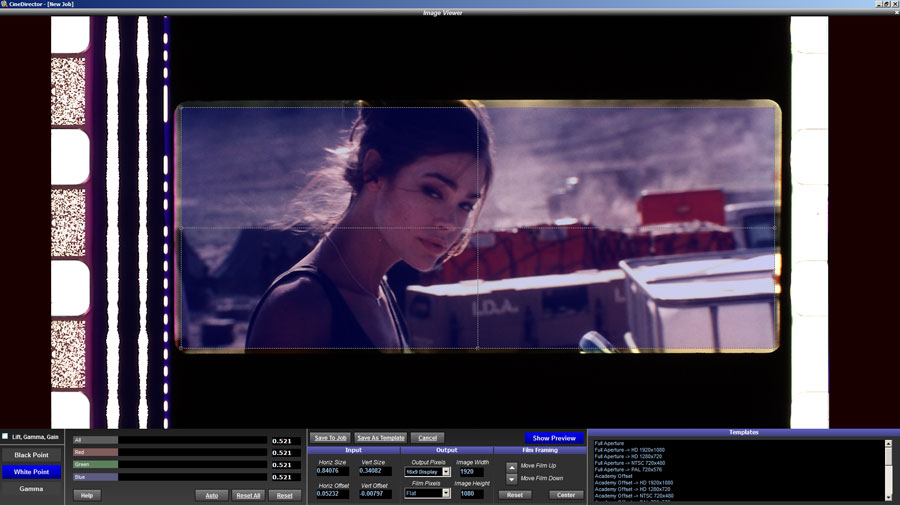
- Shuttling from 1 to 100 frames/second (200 frames/second for 16mm) with image preview and KeyKode recognition.
- KeyKode-based job management
- Multiple simultaneous output resolutions and data formats including DPX, TIFF, ProRes, JPEG 2000, and FFV1.
- Fast ProRes and and H.264 proxies/dailies
- Per-clip color correction
- Negative film type optimization
Many common negative film types are carefully characterized at Lasergraphics to allow our scanning software to compensate for variation. The result is more accurate color reproduction and less time spent color grading. - RollView™ with thumbnail preview and automatic clip/splice detection
- Seamless and easy integration with popular restoration systems including support for a secondary (reference) monitor and color grading panels.
- Storage options:
- PCIe slot available for customer-supplied adapter to connect to NAS, DAS, or SAN systems.
- Internal 16TB SSD or 32TB HDD SATA RAID
- Other:
- Meticulously calibrated, aligned and tested at the factory.
- Power requirements similar to a standard PC workstation
- Operates in normal office environment (no special cooling required)
- Full one year warranty (parts and labor)
- Extended warranty available
Trade Up
Lasergraphics offers an extremely generous trade up program that can increase the capability of your scanning system as your requirements grow over time without losing your existing investment.
Technical Specifications
- Imaging system
- Color Filter Array (CFA) image sensor
- Bayer pattern color capture
- 1.25K, 2.5K, or 5K scanning resolution
-
- Maximum scanning resolution
- 35mm: n/a, 16mm: 5K, 8mm: 2.5K
- High MTF resolution lens
- Fixed optical magnification with self-adjusting focus
- 4:3, 16:9 and 1.85 aspect ratios
- 10-bit or 16-bit log or linear bit depth (data format dependent)
- Intelligent Noise Reduction (INR)
- Film base calibration, color grading and focus independently adjusted by shot/clip/scene
- 30 fps max scanning speed
- Light source
- Integrating cube containing high-intensity, low-heat RGB LEDs
- Self-calibrates before each scan
- 100,000 hour lifespan
- Film transport system
- Continuous motion sprocketless capstan servo drive
- Removable film gates with or without pressure plate for warped film
- 2D optical pin registration
- Software-controlled adjustable film tension
- Selectable transport over particle transfer rollers
- Film shrinkage tolerance up to 5.5%
- Automatic Failed Splice Recovery™
- Supported film gauges
- 8mm, 9.5mm, 16mm, and 17.5mm
- Supported film formats
- Standard 8mm, Super 8mm, Double 8mm, 9.5mm, Standard 16mm, Super 16mm, and 17.5mm
- Self-adjusting optical magnification for maximum resolution of all film formats
- Supported film types
- Negative, Intermediate, Interpositive, Print, Reversal, Color, and B&W
- Magnetic soundtrack reader
- 16mm commag
- 16mm sepmag 2-channel
- Super 8mm commag 2-channel
- Standard 8mm commag
- 17.5mm sepmag
- Max film capacity
- 2,000 feet
- Built-in color grading
- Ungraded or primary-color graded via lift/gamma/gain or black/white/contrast color controls.
- Support for 3-ball color grading panel
- Simple dye fade correction
- Image, video, and audio output file formats
- 5K, 4K, UHD (2160p), 2K, Full HD (1080p), HD (720p), SD and others
- DPX color/B&W 10/16-bit (conforms to SMPTE 268M for compatibility with graphics, compositing, and other post production systems)
-
- JPEG 2000
- Lossy or lossless
- 8, 10, 12, or 16 bits per color
- MXF wrapper - entire scan in a single file (including audio)
- JP2 - one file per frame
-
- FFV1
- 8, 10, 12, or 16 bits per color
- MKV wrapper - entire scan in a single file (including audio)
- ADX (Academy Density Exchange Encoding)
- TIFF (8/16-bit)
- QuickTime (ProRes 4444 HQ/XQ, ProRes 422, and others)
- H.264 (MPEG-4)
- WAV/BWF
- AVI lossless
- CinemaDNG
- Host computer
- High-performance host computer preconfigured with Microsoft Windows OS and all required adapters and scanner control software
- PCIe slot available for customer-supplied high-speed connectivity or storage (e.g. 10GbE/40GbE NICs, Fibre Channel, RAID HBA, etc.).
- Internal RAID storage
- 16:9 aspect ratio LCD monitor
- Software support for customer-supplied reference monitor via secondary display port (HDMI or DisplayPort)
- Host computer can be operated remotely via KVM and/or remote access software
- Weight
- 186 lbs. (85 kg) (scanner with host computer)
- Dimensions
- 24.5" H x 47" W x 18.5" D (62 cm x 119 cm x 47 cm)
- Operating environment
- 15ºC to 30ºC
- 15% to 85% relative humidity non condensing
- 90-250V ~50/60Hz 687W

